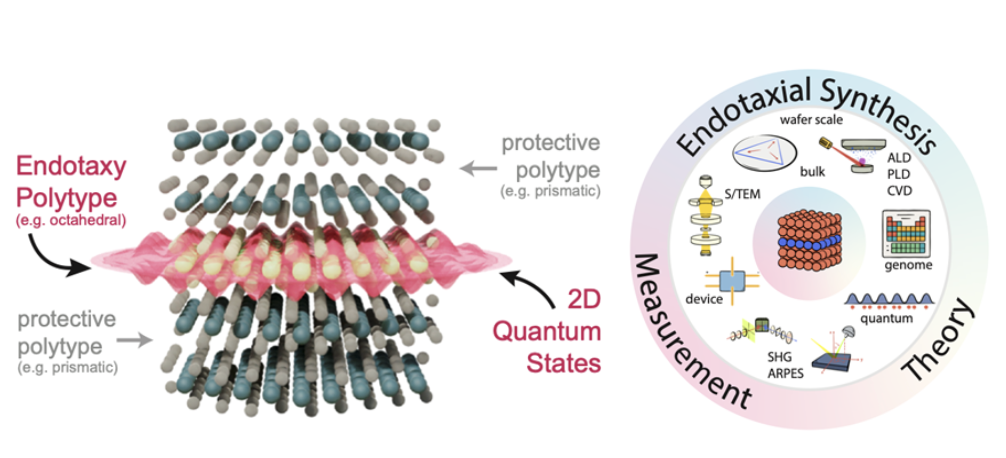
The research objective of IRG 1 is to develop a new class of materials wherein multiple polytypes of the same 2D material are synthesized within each other (endotaxy), forming robust and novel quantum states. This new class of materials, which we call endotaxial heterostructures (Figure 1), are explored using a multidisciplinary approach by bringing together a diverse team of scientists with expertise in the fields of Chemistry, Physics, Materials, and Computation to enable rapid progress in classical and quantum information processing.
Next generation nanoelectronics, optoelectronics, quantum information technology, and energy efficient computation require fundamental and translational discoveries in large scale synthesis, materials processing, and device fabrication procedures (as defined by the CHIPS and Science Act and the National Quantum Initiative). Endotaxial heterostructures have the potential to be key materials in these technologies because of their potential for novel device behavior but their identification, synthesis, and manufacture must be demonstrated.
The work in this IRG has 3 primary goals. (1) To synthesize and realize endotaxial 2D materials processing. We establish controllable synthesis of interleaved polytypes — i.e., atomically registered, clean layers within a distinct bulk polytype — using large scale thin film deposition processes suitable for microelectronics fabrication and bulk crystal growth and intercalation. (2) We identify endotaxial 2D materials and their distinct properties. We are developing an endotaxial materials genome using high-throughput computational materials science. (3) We realize novel 2D quantum states and devices. Using a broad set of quantum states-sensitive experimental tools (e.g. ARPES, SHG, PPMS, STM, STEM) we characterize the physical properties of emergent states. Based on their comprehensive understanding we fabricate and characterize microelectronic devices.
To realize these goals, we are establishing the field of polytype endotaxy materials. Our efforts provide versatile pathways to access previously unattainable quantum states through ultra-clean interfaces between polytypes. With an emphasis on developing large-area, industry compatible endotaxial materials synthesis techniques, this work creates a steppingstone to novel, sustainable, classical and quantum computing applications
 hi
hi